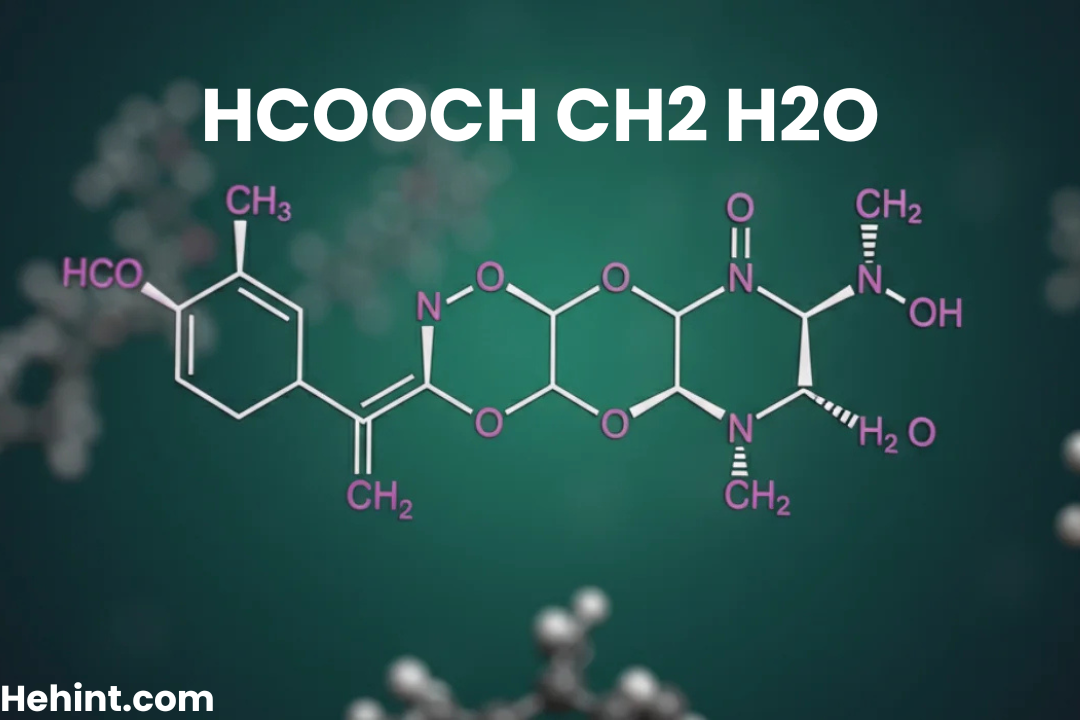What is HCOOCH CH2 H2O? Understanding HCOOCH CH2 H2O
HCOOCH CH2 H2O are chemical compounds with unique properties and applications. This blog post will cover their characteristics, uses, and chemical behavior. We’ll also explore frequently asked questions to deepen your understanding.
What is HCOOCH CH2 H2O?
HCOOCH, also known as methyl formate, is an organic compound. It is an ester formed from formic acid and methanol.
Properties of HCOOCH
- Chemical formula: HCOOCH3
- Molar mass: 60.05 g/mol
- Appearance: Colorless liquid
- Boiling point: 32 °C (89.6 °F)
- Solubility: Soluble in water
Uses of HCOOCH
- Used as a solvent in industries
- Intermediate in the production of formamide
- Flavoring agent in food products
- Used in the manufacture of pesticides
What is CH2?
CH2 refers to a methylene group, often found in organic compounds. It consists of one carbon atom double-bonded to two hydrogen atoms.
Properties of CH2
- Chemical formula: CH2
- Molar mass: 14.03 g/mol
- Structure: Highly reactive due to double bonds
- State: Typically exists in organic structures
Uses of CH2
- Building block in organic chemistry
- Found in polymers like polyethylene
- Involved in the synthesis of alkenes and alkanes
What is H2O?
H2O, commonly known as water, is a universal solvent. It consists of two hydrogen atoms bonded to one oxygen atom.
Properties of H2O
- Chemical formula: H2O
- Molar mass: 18.02 g/mol
- Boiling point: 100 °C (212 °F)
- Freezing point: 0 °C (32 °F)
- Polarity: Polar molecule
Uses of H2O
- Essential for all forms of life
- Used as a solvent in chemical reactions
- Involved in cooling and heating systems
- Used in agriculture and industry
Detailed Table on HCOOCH CH2 H2O
| Property | HCOOCH (Methyl Formate) | CH2 (Methylene) | H2O (Water) |
|---|---|---|---|
| Chemical Formula | HCOOCH3 | CH2 | H2O |
| Molar Mass (g/mol) | 60.05 | 14.03 | 18.02 |
| Physical State | Liquid | Gaseous or part of organics | Liquid |
| Boiling Point (°C) | 32 | Highly reactive, no fixed point | 100 |
| Solubility | Soluble in water | Not soluble alone | Universal solvent |
| Applications | Solvent, flavoring agent | Polymer synthesis | Life support, solvent |
Frequently Asked Questions
What are the health effects of HCOOCH CH2 H2O?
Is HCOOCH CH2 H2O harmful to humans?
Yes, exposure to high concentrations of HCOOCH can be harmful. It can cause irritation to the eyes, skin, and respiratory tract.
What should I do if I am exposed to HCOOCH CH2 H2O?
Move to fresh air immediately. Rinse any skin contact with water. Seek medical attention if symptoms persist.
How does CH2 react with other chemicals?
Why is CH2 highly reactive?
CH2 is highly reactive because of its double bonds. These bonds are unstable and seek to bond with other atoms.
What compounds are formed from CH2 reactions?
CH2 can form alkenes, alkanes, and polymers like polyethylene during chemical reactions.
Why is H2O called the universal solvent?
What makes H2O an effective solvent?
H2O is polar, meaning it has a partial positive and negative charge. This allows it to dissolve many substances.
Are there substances H2O cannot dissolve?
Yes, H2O cannot dissolve non-polar substances like oils and fats effectively.
Can HCOOCH CH2 H2O be used together?
Are there industrial applications involving all three compounds?
Yes, they are used together in chemical synthesis and industrial processes, especially in organic chemistry.
Do they react with each other?
HCOOCH and H2O can react in hydrolysis reactions. CH2, being reactive, can participate in various organic reactions with both.
Conclusion
Understanding HCOOCH CH2 H2O helps in grasping their roles in chemistry and industry. HCOOCH serves as a solvent and intermediate, CH2 is a reactive building block, and H2O is the universal solvent essential for life. Their unique properties make them invaluable in various applications. Whether for industrial use or scientific study, these compounds showcase the diversity and importance of chemical substances.







